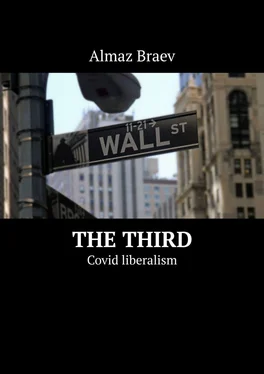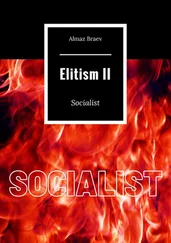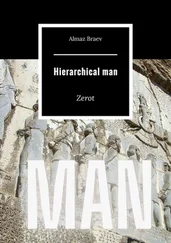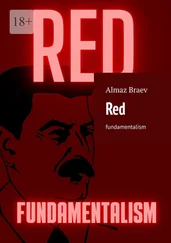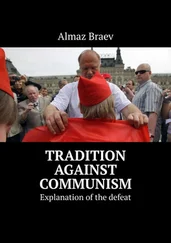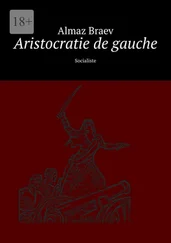Almaz Braev - The Third. Covid liberalism
Здесь есть возможность читать онлайн «Almaz Braev - The Third. Covid liberalism» — ознакомительный отрывок электронной книги совершенно бесплатно, а после прочтения отрывка купить полную версию. В некоторых случаях можно слушать аудио, скачать через торрент в формате fb2 и присутствует краткое содержание. ISBN: , Жанр: Политика, на английском языке. Описание произведения, (предисловие) а так же отзывы посетителей доступны на портале библиотеки ЛибКат.
- Название:The Third. Covid liberalism
- Автор:
- Жанр:
- Год:неизвестен
- ISBN:9785005102256
- Рейтинг книги:3 / 5. Голосов: 1
-
Избранное:Добавить в избранное
- Отзывы:
-
Ваша оценка:
- 60
- 1
- 2
- 3
- 4
- 5
The Third. Covid liberalism: краткое содержание, описание и аннотация
Предлагаем к чтению аннотацию, описание, краткое содержание или предисловие (зависит от того, что написал сам автор книги «The Third. Covid liberalism»). Если вы не нашли необходимую информацию о книге — напишите в комментариях, мы постараемся отыскать её.
The Third. Covid liberalism — читать онлайн ознакомительный отрывок
Ниже представлен текст книги, разбитый по страницам. Система сохранения места последней прочитанной страницы, позволяет с удобством читать онлайн бесплатно книгу «The Third. Covid liberalism», без необходимости каждый раз заново искать на чём Вы остановились. Поставьте закладку, и сможете в любой момент перейти на страницу, на которой закончили чтение.
Интервал:
Закладка:
GLOSSARY
Zeref- a traditional person with rigidly set social actions, low reflection almost zero, hence the word Zeref reflection zero (Zeref)). Has no semitones, serves the idols of the genus, communicates in the circle of native blood. Zeref has no semitones of perception, is categorical, irreconcilable, hostile to others and to another opinion in the development of rejection of “not your own”
Zeref’s loop – the baby boom, overheating of the population.
Zerot- the traditional feudal elite
Zerot’s loop creates a solid cast, an impenetrable social barrier. None of the lower castes can enter the feudal elite – the lack of social mobility pre-revolutionary situation.
Remid – a New traditional elite, rulers, officials, authorities, teachers; Remid put actions for Zerefs, determine morality, laws, politics, reflection average-middle (remiddle).
Remid’s loop – the elite’s struggle with the brightest personality, the cooperation of second and third parties against the hero and the prophet.
Refag- the person of a trading civilization in several generations, reflection is high, selfish, utilitarian Refag (re + high).
Zeremid is a first-generation city person, has a half-rigid social reflex of custom and new skills of city life, half-urban, half-rural. The traditional people in the first generation have undergone industrialization and cultural modernization.
Zeremid’s loop – the Zeremids are approximate imitators. They imitate the elite, any idea, any direction just to be good for their families. By imitation, hypocrisy, and even fanaticism, they harm any cause, state, or idea.
Zefa are men from the city’s first generation with a tendency towards the market and speculation, and to trade, at least something, he was forced by circumstances. People from the socialist camp were faced with market relations and market values.
Revcon – revolution conservatism
CHAPTER XI
THE OUROBOROS
You might have heard of the ancient symbol depicting a serpent eating its tail. It’s called the ouroboros. It is held to symbolize eternity, the cyclic renewal of life. The rapid change of the state elite leads to the demise of the people.
“Between 1933 and 1935 most of the czarist engineers were rounded up. In Soviet Russia, large-scale transfers of people were to different provinces, so they could not communicate with each other. Many innocents were executed immediately; others were banished to Siberia”.
“By the spring of 1936, almost all the young people who had received secondary or higher technical education between 1927 and 1932 had been arrested. Before getting rid of the qualified technical elite, the party and the government prepared successors to take that elite’s place. Thus, the regime first created a whole class of specialists and then, seeing in it a threat to its power, destroyed it.
If they hadn’t, industrial development would have faced a dead end.”
“On graduating from the academy after two years of studies, the wunderkinds (as the old workers at our factory called them) were appointed to managerial positions as soon as the specialists who had occupied them disappeared. This clearly planned and thought-out policy was carried out openly and rigorously for several years. That solved the problem – creating a class of ‘devotees to the party, truly Soviet specialists’ (in the parlance of the slogans of that time). But the young managers lacked both experiences operating machinery and theoretical knowledge, which two years at the academy could not provide. These wunderkinds had an adverse effect on factory workers, secretly despising them.”
“As soon as new – truly socialist, from the party’s standpoint – workers came into the industry and thousands of others filled the rooms with industrial academies, a large-scale purge of experienced specialists began. First, it hit those who the government had sent to study abroad to replace the old engineers, who had been educated before the Revolution, and foreign specialists.
Now they were considered hopelessly tainted, especially condemned by the bourgeois influence of their association with foreign specialists. The foundation upon which the country’s technical development developed began to disappear rapidly.”
These are excerpts from a book by a Jamaican-American, a black engineer hired by the Soviet government during industrialization, about his life in Stalin’s USSR.
Someone neither white nor red took stock of the situation as an impartial observer uninterested in politics and drew his conclusions about the regime.
As we know, such purges happened among engineers and in all sectors of the government machine. Purges reached the highest establishment of the ruling party and the military, bringing the most tragic results of all. I have long included in those tragic results the number of people the USSR lost to the German attack. But who needed to purge the country of its “enemies”?
Even Stalin – the USSR leader – did not want to live in fear when Wehrmacht troops were near Moscow. He wasn’t that stupid to eliminate his military leaders to bring his collapse closer.
A reason will be given here that was big enough to pull the rug out from under the omnipotent dictator, whom some former soviet ordinary people still hold in esteem until now.
But what he did or had planned to do to leave people with no memory of the past – a crowd of devoted fanatics – is an indicator of common self-reflection. We must understand why today the state’s body, while it seems to be where it’s not supposed to be, has a hydra of ever-hungry heads that fail to understand the sense of state. Where do those heads come from?
CHAPTER XII
THERE CAN BE NO TOTALITARIANISM WITHOUT REMIDS
All totalitarian regimes share a problem no less totalitarian in its essence than they are. The conclusions about their totality are just the final point, like an ocean that opens up before everyone instead of the rivers – events – that run together in streams to form that ocean. Still, the drops making up those rivers are people – their thoughts. At the very beginning, when they start thinking similar thoughts, no one knows yet where that might take them. And after a while, this results in a regime, a manifestation of the totality of myriads of thoughts. But who are these people? And why does responsibility for that totality rest with the leaders, not the people?
Answers should be sought in the people’s similarity, of course. With time, people will gather to form an order – first a group, then a political party that brings everyone together in one place or directs them to that place. Before people assemble in a square, their thoughts will get together. And before the similarity of indignation, vexation, and negation materializes (elsewhere in the world), one needs to find the origin of this similarity. The origin of their reaction and the source of their indignation lies in tradition.
Tradition. Tradition-minded people take care to first observe their rituals. And then they respond to crises, all similarly. That’s what the cause of totalitarianism is. Don’t look for similarities in city residents who have lost touch with the place that, while not their birthplace, still holds their roots and is home to their relatives. Refags remember no one, making it difficult to bring them together. Their thoughts are like cockroaches scurrying on the kitchen floor. Everyone thinks they are someone. Everyone is on their own. The totality of Rrefags is yet to merge into their ocean, their own world order. But we are still concerned here with tradition and tradition-minded people. We are investigating why they have their totality.
Читать дальшеИнтервал:
Закладка:
Похожие книги на «The Third. Covid liberalism»
Представляем Вашему вниманию похожие книги на «The Third. Covid liberalism» списком для выбора. Мы отобрали схожую по названию и смыслу литературу в надежде предоставить читателям больше вариантов отыскать новые, интересные, ещё непрочитанные произведения.
Обсуждение, отзывы о книге «The Third. Covid liberalism» и просто собственные мнения читателей. Оставьте ваши комментарии, напишите, что Вы думаете о произведении, его смысле или главных героях. Укажите что конкретно понравилось, а что нет, и почему Вы так считаете.
